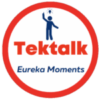
Identify and setup project management tools and processes?
Identify and setup project management tools and processes?
Project Management Plan
A Project Management Plan (PMP) is a comprehensive document that outlines how a project will be planned, executed, monitored, controlled, and closed. It serves as a roadmap for the project team and stakeholders to ensure that the project is completed successfully. Here are five key items typically included in a Project Management Plan. You can check this article for more details.
Project Scope Statement
This section defines the project’s objectives, deliverables, constraints, assumptions, and acceptance criteria. It provides a clear understanding of what the project will and will not encompass.
Project Schedule
The project schedule outlines the timeline for all project activities, tasks, and milestones. It includes start and finish dates, dependencies between tasks, and resource allocation. Gantt charts and network diagrams are often used to visualize the schedule.
Resource Management
This section details how project resources, including personnel, equipment, and materials, will be allocated and managed. It includes roles and responsibilities, resource calendars, and any constraints related to resource availability.
Risk Management
Risk management outlines how risks will be identified, assessed, and mitigated throughout the project lifecycle. It includes a risk register with potential risks, their impacts, likelihoods, and response strategies.
Quality Management
Quality management describes how the project’s quality requirements will be met. It includes quality standards, metrics, and processes for quality assurance and quality control. It outlines how deviations from quality standards will be addressed.
Status Report
Status reports are the bread and butter of any project manager. It is the tool to communicate the progress of the project to the team and the stakeholders. Providing this on a regular basis forms the basis of tracking the progress of your project, the problems you are facing and the mitigation strategies you are adopting for the smooth running of the project. Your main mechanism of communication for any small or large project is important from the perspective of setup of project management tools and processes. You can find several status report templates. This is available in MS Word too as a downloadable template.
Risk Log
A risk register is essentially a table of project risks that allows you to track each identified risk and any vital information about it. These are the items that are typically captured and tracked as part of your project manager duties. This is the most important of setup of project management tools and processes.
- Identification number (to quickly refer to or identify each risk)
- Name or brief description of the risk
- Risk categories (whether it’s internal or external, material-related or labor-related, etc.)
- Probability (how likely the risk is to occur)
- Impact (if the risk takes place, how seriously will it impact your project)
- Rating (where does this risk fall on your priority list)
- Approach (will you monitor the risk, try to mitigate it, avoid it, etc.)
- Action (if you plan to mitigate or avoid the risk, what are the steps involved, and when will they occur) Person responsible for overseeing or mitigating the risk
Issue Log
The issue log, sometimes also known as an issue register, is a project document where all issues that are negatively affecting the project are recorded and tracked. When an issue log is created, it provides a tool for reporting and communicating all that is happening within the project. Let us look at some of the items that are captured in an issue register. This is an important aspect of setup of project management tools and processes.
- Issue name: Provide a specific name for the challenge the team faces that makes it easy to identify.
- Issue type: Consider the types of project challenges you typically encounter so you can categorize them. For example, you might choose to categorize challenges by department or vendor.
- Issue number: Assigning a number to each challenge the team reports can make it easier to track and differentiate them from other reports.
- Reported by: Include the name of the person who reports the challenge. This can improve communication and ensure you know who to talk to if you have questions about the report or need more details.
- Open date: Listing the date an individual files a report can help you determine how long it takes the team to develop a solution. It can also help you prioritize tasks to ensure you resolve each challenge in a timely manner.
- Detailed description: Providing as much detail as possible can make it easier for other team members to work on resolving the issue together. It can also help you ensure the same challenge doesn’t appear multiple times in your issue log.
- Priority: Determining how important resolving a specific challenge is can help the team prioritize their daily tasks. Common priority labels include “low,” “medium” and “high.”
- Assigned to: Use this section to delegate the task to another team member who has the resources and experience to resolve the challenge. This can help you improve productivity and encourage teamwork.
- Status: Assigning a status to each reported challenge can help you determine whether the team has resolved the issue. Some common labels you may use for this field include “open,” “in progress,” “blocked” and “done.”
- Target resolution date: Set a deadline for when the team needs a solution. This can help you hold team members accountable and ensure your project runs smoothly.
- Solution: Once the team develops a solution, briefly describe the steps they took. If you run into a similar challenge in the future, you can reference this section to remember how you overcame it so you can resolve the recent issue faster.
- Close date: List the date you resolved the challenge in this section. This can help you track your progress.
Others
The list mentioned above are the key items for starting your project and being ready with the basic tools. There are several others and here are a few of them. The four listed below are help in the identification and setup of project management tools and processes.
- Decision Log: To record the key decisions taken during the project execution
- Steering Committee Deck: This is required to report to the project stakeholders the key challenges to the project, roadblocks if any, mitigation strategies, Change requests, budgets and other decisions that will showcase the outcome of the project.
- Budget: Keeping track of the budget and ensuring that it is on track and not overspending.
- Meeting Minutes: Recording all meeting activities for future reference and recording decisions taken.
With the above, you can be ready to take on the project as you have the basic templates ready and the process defined in detail in the project management plan.
Authored by Vijay Chander – All rights reserved – 2023



